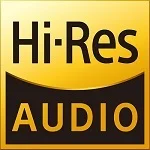Wireless. Wired.
The xDSD is for people who love to listen — on the go or at home.
You choose wireless via Bluetooth® or wired via USB or SPDIF.
Apple or Android, DAP, games console or TV, just connect the xDSD and enjoy the ultimate audio experience.

Hi-Res. Future-proof.
The xDSD plays high-quality digital audio file formats up to DSD512. Listen to your favourite tracks as they were meant to be.
In love with Hi-Res streaming? Listen to Tidal HiFi and Spotify Premium with ease.
The xDSD is also MQA ready straight out of the box. Use with Tidal ‘HiFi’ on your computer or mobile.
And it’s fully Roon tested for easy set-up.
Bluetooth freedom
The convenience of Bluetooth® means your headphones connect to the xDSD, leaving your phone or chosen device wire free. Pop the xDSD in your pocket and it’s business as usual but with much better sound.
The xDSD boasts both aptX™ and AAC™ Bluetooth® for CD-like quality. With standard Bluetooth®, the sound quality drops by 30%, not so with the iFi Bluetooth® implementation. Just a little iFi magic for you!

Superior sonics
With amazing amplification, driven by 500 mW of power, the xDSD handles almost any headphones and it easily partners up with active home speakers.
And, of course, we’ve included our exclusive optional ‘sonic fine-tuning extras’ to add further nuances to your listening.
xBass+® cleans and restores the bass to give you a richer, deeper sound and 3D+® opens up your music to bring a live-concert atmosphere into your living room.
Perfectly balanced
iFi’s exclusive S-Balanced technology means that you gain the advantages of a balanced connection even when using an unbalanced one.
On headphones this means lower distortion, less interference, and reduce crosstalk.

Smart. Stylish.
The battery lasts up to 10 hours and ‘smart’ tech ensures you enjoy optimum listening time adjusted according to your usage. The xDSD has a separate USB charging socket.
And finally, with its metallic chrome finish and elegant, ergonomic design, based upon the Japanese Zen garden, it puts the ‘x’ back into sexy.
DACs convert digital information, stored or streamed by computers, into music we can hear through speakers or headphones.
Every device that’s a source of digital sound has a built-in DAC (TVs, games consoles, CD players, phones, portable music players etc). Dedicated external DACs sound much better than standard DACs used in digital devices such as phones.
A DAP is a device like an iPod or an MP3 player that stores and/or plays back music digitally.
DSD is a very high-quality digital audio format that’s even better than CD quality. The higher the ‘DSD rate’ – DSD64, 128, 256, 512 and 1024 – the greater the amount of music information available, which means better sound quality.
Files can be remastered to higher file rates to improve sound quality. The pinnacle of this is DSD1024. Not many machines out there are capable of this feat.
Spotify Premium allows you to listen better quality music. It’s all about bitrates. The bitrate is the amount of data processed over a certain amount of time. The higher the bitrate, the better the quality.
On normal Spotify you listen at 96kbps, the ‘standard’ bitrate on mobile or at 160kbps, ‘standard quality’ on desktop and ‘high quality’ on mobile.
With Spotify Premium, you get 320kbps which is ‘high quality’ on desktop and ‘extreme quality’ on mobile. Basically, more bitrates for your buck.
MQA is an award-winning British technology that delivers the sound of the original master recording. The master MQA file is fully authenticated and is small enough to stream or download. More here.
Tidal is a subscription-based audio streaming platform, similar to Apple Music and Spotify, but with lossless-quality audio. Tidal Masters is the section with the highest-fidelity music streamed including some files in partnership with MQA.
Lossless-quality means that no music quality is lost in this format.
AAC is one of the most commonly-supported Bluetooth codecs in the wireless headphone and speaker markets. It’s also the default audio compression codec used by Apple’s iTunes and YouTube and is supported across both iPhone and Android smartphones.
Let’s talk headphone cables.
An unbalanced headphone cable has a left + and right + wire, for each respective side. The other, the third – wire is shared by both left & right channels. As this is shared, this gives rise to undesired coupling noise which is commonly referred to as ‘crosstalk.’
A balanced cable has the same left + and right +. But it has a separate left – and right -. With totally separate wiring ‘crosstalk’ is negligible.
Therefore, a balanced connection is the superior headphone wiring configuration.





















































